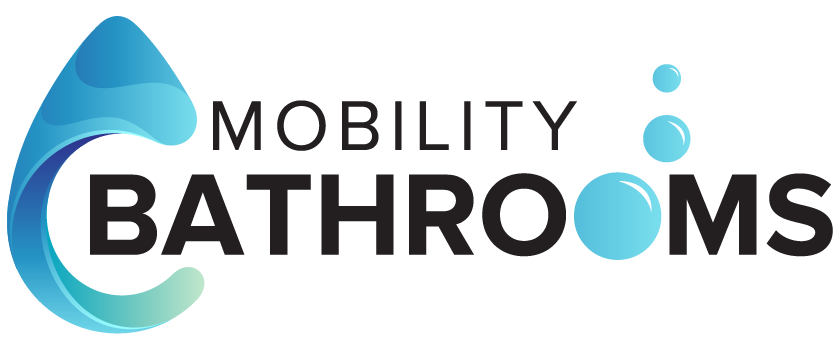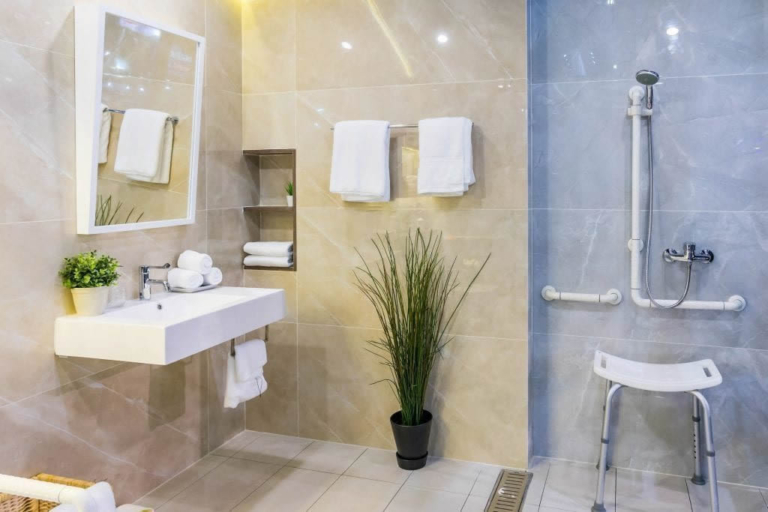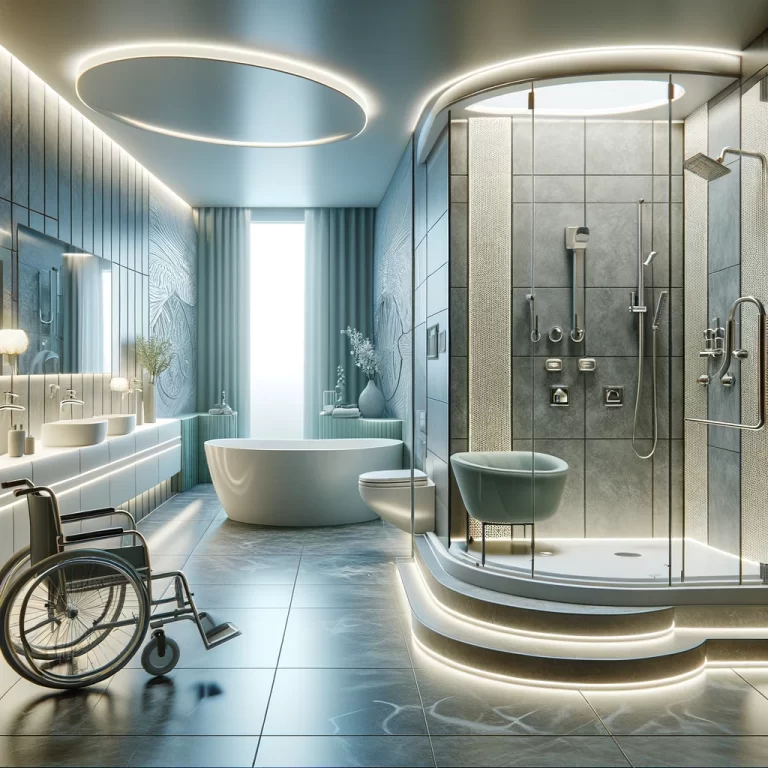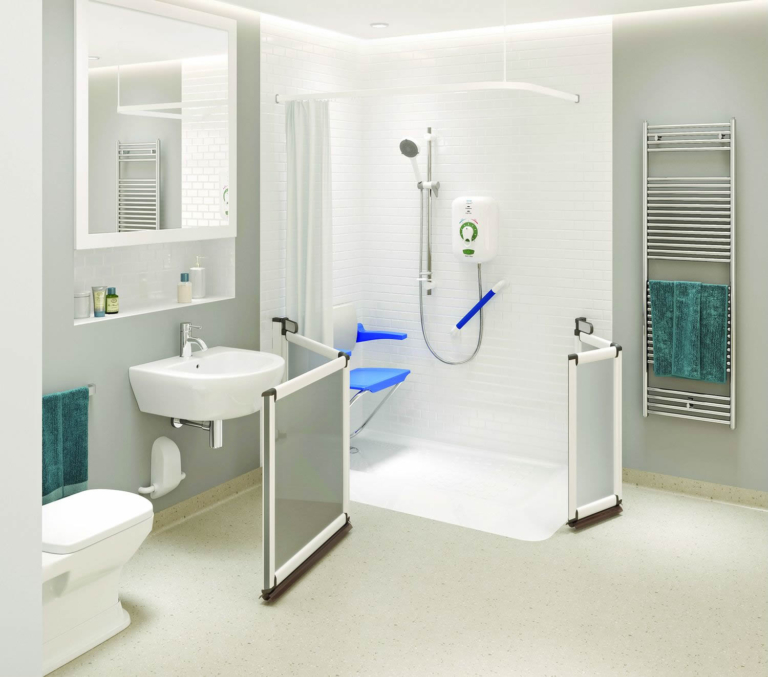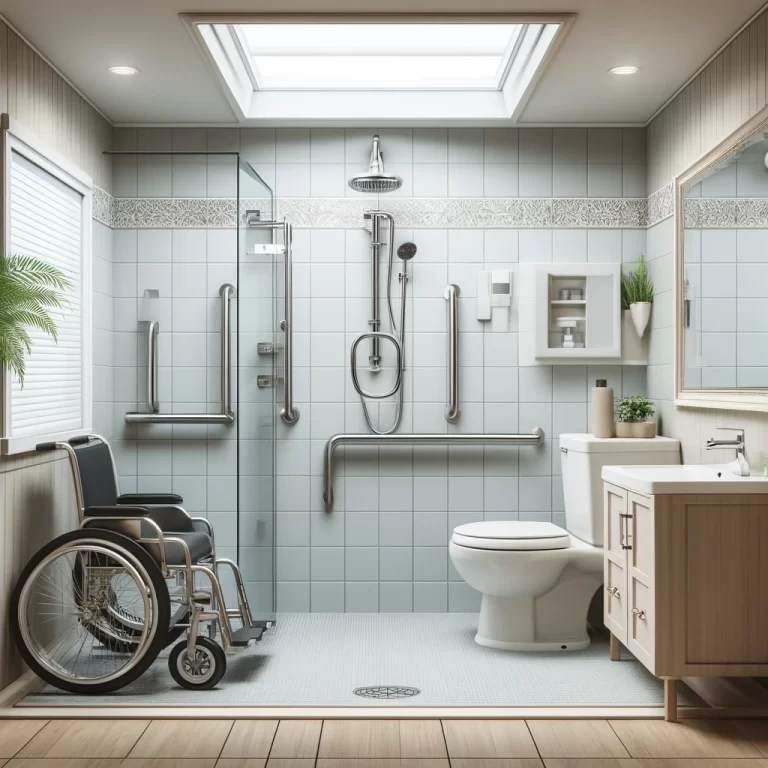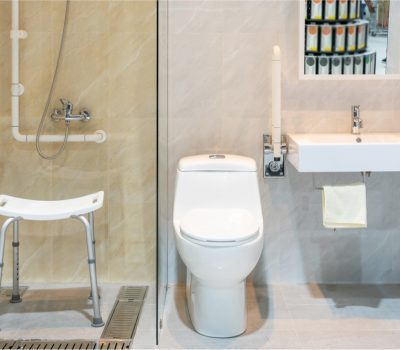Can regular people use disabled bathrooms
Disabled toilets are specially designed to cater to the needs of individuals with disabilities, providing them with a safe and accessible space to use facilities independently. These toilets are equipped with various features to enhance usability, from wider doorways to emergency call buttons. Can non-disabled individuals use these facilities? This article explores the laws surrounding disabled toilets, consequences for misuse, and alternatives available. Let’s delve into the topic to understand the importance of promoting inclusivity and accessibility for all.
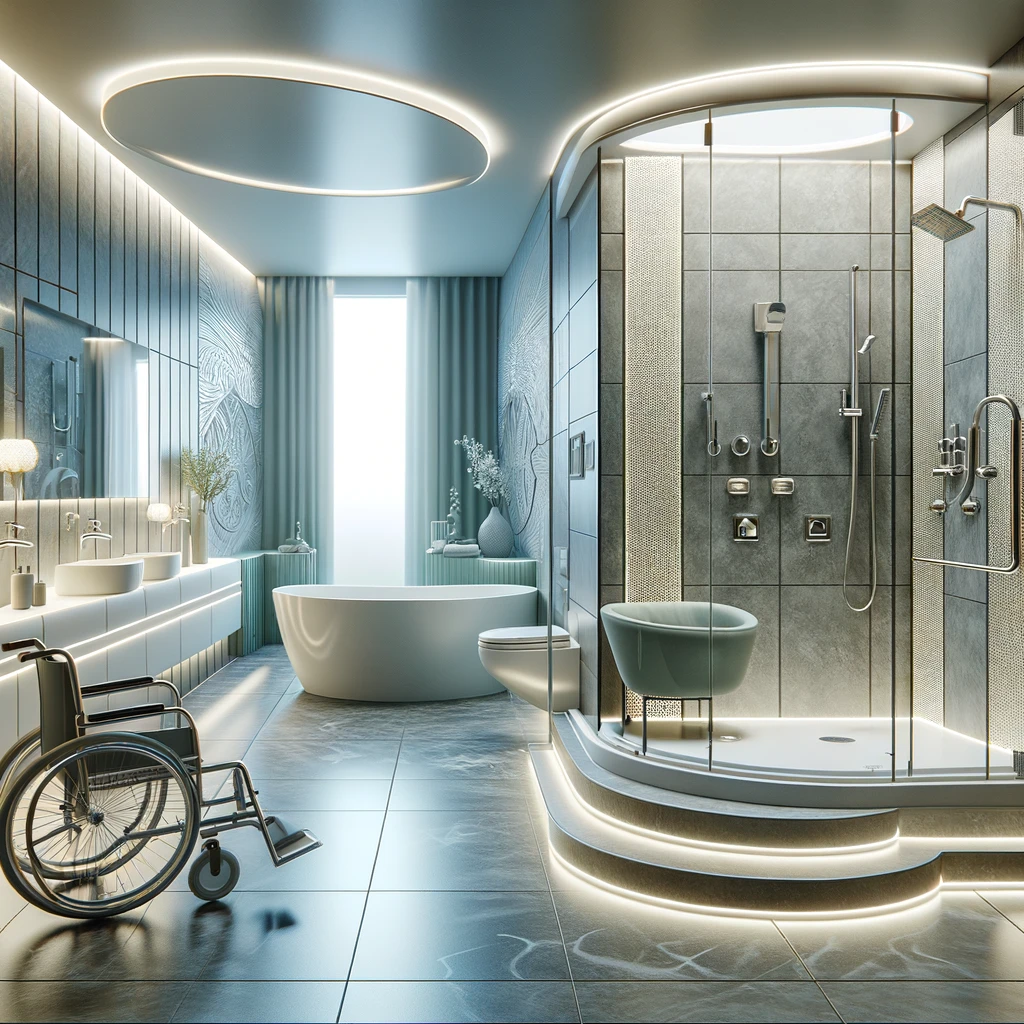
What Are Disabled Bathrooms?
Disabled toilets, also known as accessible loos, are specially designed facilities that cater to the needs of individuals with disabilities, providing necessary features to ensure ease of use and comfort.
These toilets play a crucial role in ensuring inclusivity and accessibility in public spaces, as they are designed to meet specific regulations and guidelines set forth to accommodate diverse needs. Accessible loos are equipped with features such as grab rails, wider doorways, lower sinks, and higher toilet seats to facilitate ease of movement and usage for wheelchair users and individuals with mobility challenges. The layout and placement of fixtures are meticulously planned to ensure manoeuvrability and safety within the space.
Who Are Disabled Bathrooms Intended For?
Disabled bathrooms are primarily intended for individuals with disabilities, including those who require Changing Places facilities for their personal care needs, promoting independence and complying with the Equality Act regulations.
Target demographic for disabled bathrooms includes individuals with physical disabilities, cognitive impairments, sensory challenges, and those with mobility issues.
These individuals may require specific facilities like Changing Places bathrooms that cater to their diverse needs, such as adjustable changing benches, hoists, and additional space for caregivers. The presence of features like grab rails and non-slip flooring not only enhances safety but also fosters a sense of independence and dignity for users.
Providing inclusive and accessible facilities is crucial in ensuring equal opportunities for all individuals, regardless of their abilities.
What Are The Features Of Disabled Bathrooms?
Disabled toilets encompass a range of features such as clear signage, specialised toilet facilities, and heightened awareness to combat discrimination and ensure equal access for all individuals.
Clear signage in disabled toilets plays a crucial role in guiding individuals with disabilities to the accessible facilities. These signs often include visual icons and braille for those with visual impairments. Inclusive facilities, including grab rails, non-slip flooring, and adjustable basin heights, are essential for providing a safe and comfortable experience for users of all abilities. Raising awareness about the importance of these accommodations helps to foster a more inclusive and accepting environment for individuals with disabilities, reducing stigmas and prejudices.
Wider Doorways
Wider doorways in disabled bathrooms, mandated by Building Regulations, enhance safety and facilitate smooth entry for wheelchair users and individuals with mobility challenges.
These wider doorways not only allow for easy passage of wheelchairs but also provide greater space for manoeuvring within the bathroom, promoting independence and ensuring a user-friendly experience for those with mobility impairments.
Compliance with Building Regulations in terms of doorway width is crucial, as it guarantees that individuals with varying degrees of mobility challenges can navigate the space with ease and without restrictions.
Grab Bars
Grab rails, or grab handles, are essential safety fixtures in disabled bathrooms, providing support and stability for individuals with disabilities while using toilet facilities.
These assistive devices play a crucial role in preventing slips, falls, and accidents, particularly for those with limited mobility or balance issues. By installing grab rails strategically near toilets, showers, and bathing areas, individuals with disabilities can navigate these spaces with greater ease and confidence.
There are various types of grab rails available, including horizontal bars, vertical bars, angled bars, and floor-to-ceiling poles, each designed to cater to different needs and preferences. Grab rails come in a range of materials such as stainless steel, plastic, or nylon, ensuring durability and easy maintenance.
Lowered Sinks and Counters
Lowered sinks and counters in disabled bathrooms ensure accessible surfaces for individuals with disabilities, promoting cleanliness and ease of maintenance in the facilities.
These specially designed features play a crucial role in creating an inclusive environment where people with mobility limitations can comfortably and independently perform daily hygiene tasks. By having sinks and counters at lowered heights, wheelchair users, individuals with limited mobility, or those of shorter stature can reach them without the need for assistance, fostering a sense of autonomy and dignity. This not only enhances accessibility but also contributes to the overall cleanliness and sanitation of the space, as individuals are more likely to use the facilities correctly when they are designed with their specific needs in mind.
Raised Toilets
Raised toilets in disabled lavatories offer privacy, independence, and may be equipped with emergency alarms for added safety and convenience for individuals with disabilities.
These raised toilets serve as a pivotal component in enhancing accessibility for people with disabilities, ensuring they can use the facilities with ease and comfort. Integrating emergency alarms into the design not only promotes safety but also provides reassurance in case of emergencies, allowing for quick and efficient assistance.
The inclusion of emergency alarms is a crucial feature that underscores the commitment to ensuring the well-being and security of individuals with disabilities, creating a supportive environment that addresses their unique needs. By prioritising safety measures in disabled lavatories, these facilities strive to promote autonomy and dignity for users, fostering a sense of enablement and inclusivity.
Emergency Call Buttons
Emergency call buttons, often equipped with sensor-activated technology, are essential features in disabled bathrooms to ensure prompt assistance, proper waste disposal, and adequate ventilation for user comfort.
These buttons act as a direct communication link between individuals in distress and assistance services, facilitating quick response times in case of emergencies. The sensor-activated design detects unusual situations, such as a fall or sudden illness, and triggers the alarm system to alert carers or emergency personnel.
Along with ensuring safety, these buttons also play a crucial role in waste disposal by enabling users to request timely cleaning and maintenance services. Their integration in disabled bathrooms helps maintain proper ventilation, preventing odours and ensuring a hygienic environment.
Can Regular People Use Accessible Toilets?
Whilst accessible toilets are primarily designed for individuals with impairments in public areas, they may offer convenience for regular people in certain situations where standard facilities are unavailable or inadequate.
For instance, during peak hours in crowded venues like shopping centres or event spaces, non-disabled individuals might find the accessible toilets less congested, providing a quicker and more comfortable option. These restrooms often offer additional space, grab rails, and lower basins, making them more user-friendly for parents with young children or people carrying bulky items. By utilising accessible toilets when necessary, individuals without disabilities contribute to fostering an inclusive environment and respecting the needs of those requiring specialised facilities.
What Are The Laws Regarding Disabled Bathrooms?
Laws regarding disabled toilets focus on preventing discrimination, ensuring compliance with regulations, and raising awareness about the importance of accessible facilities for individuals with disabilities.
These legal frameworks serve as a crucial mechanism to protect the rights of individuals with disabilities. Anti-discrimination laws, such as the Americans with Disabilities Act (ADA) in the United States, mandate that public accommodations and commercial facilities must provide equal access to persons with disabilities.
Along with anti-discrimination laws, regulatory requirements set specific standards for disabled toilets, including the installation of grab rails, ramps, and wider doorways to ensure accessibility. Promoting awareness of these regulations is essential to encourage businesses and institutions to create inclusive environments for all individuals.
Are There Any Consequences For Using A Disabled Bathroom As A Non-Disabled Person?
Using a disabled toilet as a non-disabled person in public areas can be considered discriminatory and highlights the importance of raising awareness about respecting the needs of individuals with disabilities.
It is crucial to recognise the significance of accessible facilities in fostering inclusivity within society. Respecting designated spaces designed for individuals with disabilities is not just a matter of convenience but a fundamental aspect of promoting equality and understanding. By utilising a disabled toilet as a non-disabled individual, one inadvertently perpetuates barriers that hinder the progress towards a more inclusive environment. This action can marginalise those who truly rely on these facilities for their daily needs, leading to feelings of exclusion and neglect. Creating a supportive and accommodating atmosphere for all individuals, regardless of ability, is essential for building a more empathetic and harmonious community.
Why Do Some People Use Disabled Bathrooms Even If They Are Not Disabled?
Some individuals may use accessible toilets for reasons such as seeking increased independence, access to emergency alarms, and enhanced cleanliness compared to standard facilities.
When non-disabled individuals choose to use accessible toilets, their motivation often originates from a genuine desire for independence. These facilities provide additional space and supportive features, allowing users to move freely and comfortably without facing the usual constraints of standard lavatories. The presence of emergency alarms in accessible toilets adds another layer of security, providing reassurance to those who may feel vulnerable in public toilet settings. The focus on improved hygiene standards also plays a crucial role in attracting individuals to these facilities, as cleanliness and sanitation are vital aspects of a comfortable toilet experience.
Accessibility
Accessibility is a key factor driving the use of disabled bathrooms by non-disabled individuals, prompting campaigns and awareness initiatives to foster inclusivity and understanding among diverse user groups.
The wider promotion of accessibility in public spaces has significantly impacted societal perspectives and behaviours, encouraging individuals of all abilities to support each other. A pivotal aspect of these efforts is the introduction of educational programmes that highlight the importance of inclusive facilities for everyone, not just those with specific needs. By advocating for the utilisation of disabled bathrooms by non-disabled individuals, these campaigns aim to break down stigmas and cultivate a culture of shared space and mutual respect.
Privacy
Privacy concerns, in line with the Equality Act 2010, can drive non-disabled individuals to use disabled bathrooms to ensure a higher level of privacy and avoid potential discriminatory behaviours in public facilities.
Privacy is a fundamental aspect of human dignity and respect, and the Equality Act 2010 underpins this by safeguarding against discrimination based on disability. By choosing to use disabled bathrooms, individuals not only prioritise their own privacy but also contribute to the creation of an environment where everyone feels respected and valued. Accessing these facilities can provide a quiet haven away from crowded public restrooms, offering a more peaceful and private space for personal needs.
Hygiene
The focus on hygiene, including features like sensor-activated controls and temperature control, may attract non-disabled users to disabled bathrooms seeking higher cleanliness standards and enhanced functionality.
For many, the convenience and practicality of sensor-activated controls go beyond mere accessibility—allowing for touchless operation, thus reducing the risk of germ transmission and promoting a more sanitary environment. Similarly, the incorporation of temperature regulation features in disabled bathrooms offers users the ability to customise their experience, ensuring optimal comfort during use. These amenities not only cater to the needs of individuals with disabilities but also provide a superior level of convenience and cleanliness that can be appealing to a broader audience, ultimately promoting a more inclusive restroom experience.

What Are The Alternatives To Using A Disabled Bathroom?
Alternatives to using a disabled bathroom include family/assisted bathrooms, gender-neutral facilities, and portable urinals, offering diverse options to cater to various needs and preferences.
Family/assisted bathrooms are designed to accommodate individuals with children, disabilities, or those who require additional assistance. These facilities often feature spacious layouts, baby-changing stations, and supportive equipment. They promote inclusivity and comfort for families and caregivers, ensuring a stress-free experience.
Gender-neutral facilities provide a safe and welcoming environment for individuals of all genders. These restrooms eliminate barriers and discrimination, offering privacy and respect to everyone. They play a crucial role in creating a more inclusive and equitable society.
Portable urinals are convenient solutions for outdoor events, campsites, or situations where traditional restroom facilities are unavailable. They are compact, easy to use, and promote hygiene and accessibility. Portable urinals offer independence and convenience for individuals with mobility challenges or specific needs.
Family/Assisted Bathrooms
Family/Assisted bathrooms, in compliance with the Equality Act 2010, cater to diverse needs such as those related to Crohn’s and offer accessible facilities for individuals requiring assistance beyond standard restrooms.
These specialised bathrooms are equipped with grab bars and handrails, ensuring stability and support for those with mobility concerns. They often feature lower sinks and toilets for children or individuals in wheelchairs. The inclusion of emergency pull cords and larger stall areas further enhance safety and comfort, promoting independence and dignity. Individuals with medical conditions like Crohn’s benefit from the privacy and cleanliness these facilities provide, reducing stress and discomfort. Family/assisted bathrooms play a crucial role in fostering inclusivity and accessibility in public spaces, aligning with the principles of the Equality Act 2010.”
Gender-Neutral Bathrooms
Gender-neutral toilets, promoted for inclusivity and awareness, cater to diverse needs including those related to conditions like IBS, offering a welcoming and inclusive toilet environment for all individuals.
By providing a safe space where individuals can feel comfortable using the facilities without fear of judgement or discrimination, gender-neutral toilets play a crucial role in creating a more inclusive environment.
These lavatories are not only beneficial for individuals with specific medical conditions like IBS, but they also serve as a welcoming space for members of the LGBTQ+ community who may feel uncomfortable or unsafe in traditional gender-segregated toilets.
Portable Urinals
Portable urinals, offering convenience and mobility, are practical alternatives to traditional toilets, especially for individuals with conditions like multiple sclerosis that require frequent or urgent access to facilities.
These innovative solutions play a crucial role in enhancing accessibility and mobility for individuals facing challenges with standard toilet access. Whether at home, on the move, or in healthcare facilities, portable urinals provide a discreet and efficient option for managing urinary needs conveniently. Their compact design and ease of use make them ideal for individuals with limited mobility or who struggle with traditional toilet facilities.
How Can We Promote Inclusivity and Accessibility For Disabled Bathrooms?
Promoting inclusivity and accessibility for disabled bathrooms requires collaborative efforts involving the government, organisations like Crohn’s & Colitis UK, and awareness campaigns to ensure equal access and facilities for all individuals.
Government entities play a crucial role in establishing and enforcing regulations that mandate the construction of accessible facilities. Organisations such as Crohn’s & Colitis UK provide invaluable support and resources for individuals with specific needs, advocating for improved bathroom designs and amenities. Moreover, awareness initiatives are essential in educating the general public about the importance of inclusive bathroom spaces, fostering empathy and understanding towards those who require special accommodations.
Frequently Asked Questions
Can regular people use disabled bathrooms?
Yes, regular people can use disabled bathrooms in certain situations. These bathrooms are primarily designed for individuals with disabilities, but they can also be used by anyone who may need them.
Who are disabled bathrooms for?
Disabled bathrooms are specifically designed to cater to the needs of individuals with disabilities. These can include physical disabilities, visual impairments, hearing impairments, and cognitive disabilities.
What makes a bathroom a “disabled bathroom”?
A disabled bathroom must meet certain requirements and standards set by the Americans with Disabilities Act (ADA). This includes features such as grab bars, wider doorways, and accessible toilets and sinks.
Can non-disabled individuals use disabled bathrooms?
While these bathrooms are primarily designed for individuals with disabilities, they can also be used by non-disabled individuals in certain circumstances. For example, a parent may need to use a larger, more accessible bathroom stall with their child.
Is it okay to use a disabled bathroom if there are no other options available?
Yes, it is acceptable to use a disabled bathroom if there are no other options available. However, it is important to be mindful of the needs of individuals with disabilities and avoid using these bathrooms when other options are available.
What should I do if I accidentally use a disabled bathroom?
If you accidentally use a disabled bathroom, simply apologize and try to be more aware in the future. It may also be helpful to educate yourself on the needs of individuals with disabilities and the importance of these bathrooms.
